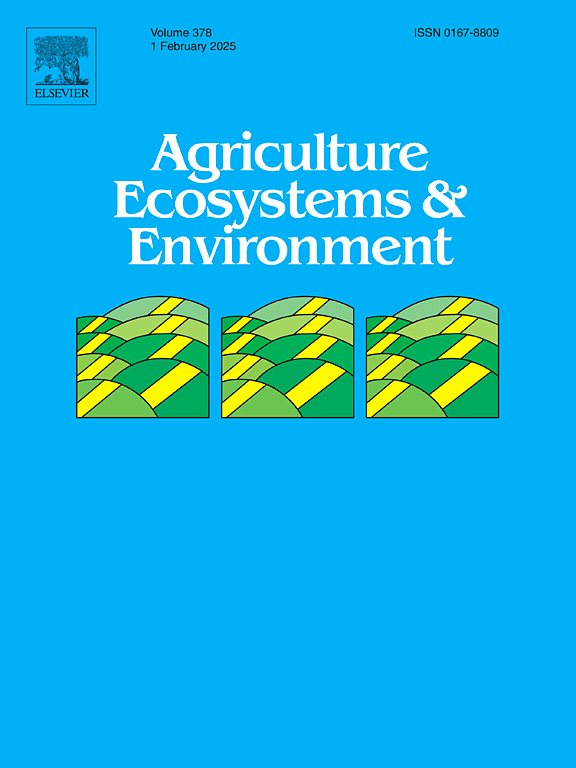High importance of organic fertilizer nitrogen applied to temperate grassland for plant nitrogen uptake in the years following fertilization
IF 6.4
1区 农林科学
Q1 AGRICULTURE, MULTIDISCIPLINARY
引用次数: 0
Abstract
We applied 15N labelled cattle slurry over one year to large grassland lysimeters in Southern Germany to study its importance for plant nitrogen (N) nutrition not only in the year of application, but also in the following four years, and for both current and future climatic conditions. In the year of 15N fertilizer application, the recovery of 15N in harvested aboveground plant biomass was as low as 16 %, with several fold larger 15N recovery in soil organic nitrogen (SON). In the first year after its application, the labelled 15N was of equal importance for plant N nutrition compared to the year of application, as illustrated by a plant 15N recovery of 9–14 %. The recovery of 15N fertilizer in mowed plant biomass remained relatively stable and only gradually declined in the following years, ultimately resulting in a cumulative 15N recovery rate of 33–37 % in mowed biomass after five years. Total 15N recovery in plant and soil after five years was 67.6 ± 3.8 % for the climate change treatment and 75.6 ± 10.8 % for the climate control treatment, suggesting increased long-term fertilizer N losses under warming. Overall, this study reveals a minimal contribution of recent fertilizer N to plant nutrition, but a surprisingly quick recycling via SON and re-allocation to plants. The findings support a concept that fertilizing such grasslands is largely a fertilization of soils rather than a direct fertilization of plants, with a fast turnover of fertilizer-derived SON promoting the risk of soil N mining.
在温带草原施用有机肥氮对植物在施肥后几年的氮吸收具有重要意义
我们在德国南部的大型草地溶渗仪上施用了一年的15N标记牛浆,以研究其对植物氮(N)营养的重要性,不仅在施用年份,而且在接下来的四年中,以及对当前和未来气候条件的重要性。在施用15N的年份,收获的地上植物生物量对15N的回收率低至16% %,土壤有机氮(SON)的15N回收率高出数倍。在施用后的第一年,标记15N对植株氮素营养的重要性与施用年份相当,植株15N回收率为9 - 14% %。15N肥料在刈割植物生物量中的回收率保持相对稳定,只是在随后的几年中逐渐下降,最终导致5年后刈割生物量的15N累计回收率为33-37 %。气候变化处理5年后植物和土壤15N总回收率为67.6 ± 3.8 %,气候控制处理为75.6 ± 10.8 %,表明增温条件下长期氮肥损失增加。总的来说,本研究揭示了氮肥对植物营养的贡献很小,但通过SON和重新分配给植物的循环速度惊人。这些发现支持了这样一个概念,即对这样的草地施肥主要是对土壤的施肥,而不是对植物的直接施肥,肥料衍生的SON的快速周转增加了土壤N开采的风险。
本文章由计算机程序翻译,如有差异,请以英文原文为准。
求助全文
约1分钟内获得全文
求助全文
来源期刊

Agriculture, Ecosystems & Environment
环境科学-环境科学
CiteScore
11.70
自引率
9.10%
发文量
392
审稿时长
26 days
期刊介绍:
Agriculture, Ecosystems and Environment publishes scientific articles dealing with the interface between agroecosystems and the natural environment, specifically how agriculture influences the environment and how changes in that environment impact agroecosystems. Preference is given to papers from experimental and observational research at the field, system or landscape level, from studies that enhance our understanding of processes using data-based biophysical modelling, and papers that bridge scientific disciplines and integrate knowledge. All papers should be placed in an international or wide comparative context.
 求助内容:
求助内容: 应助结果提醒方式:
应助结果提醒方式:


